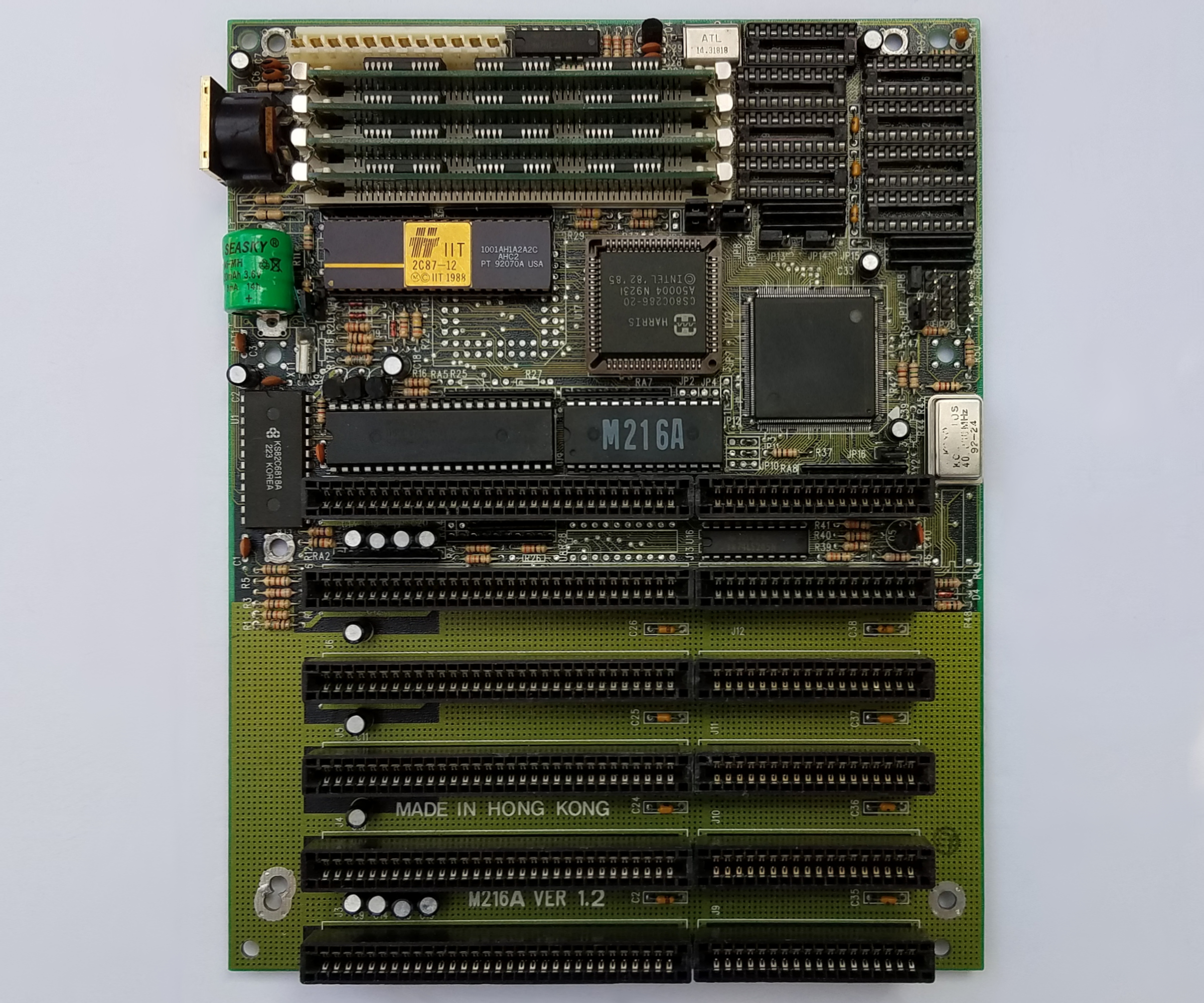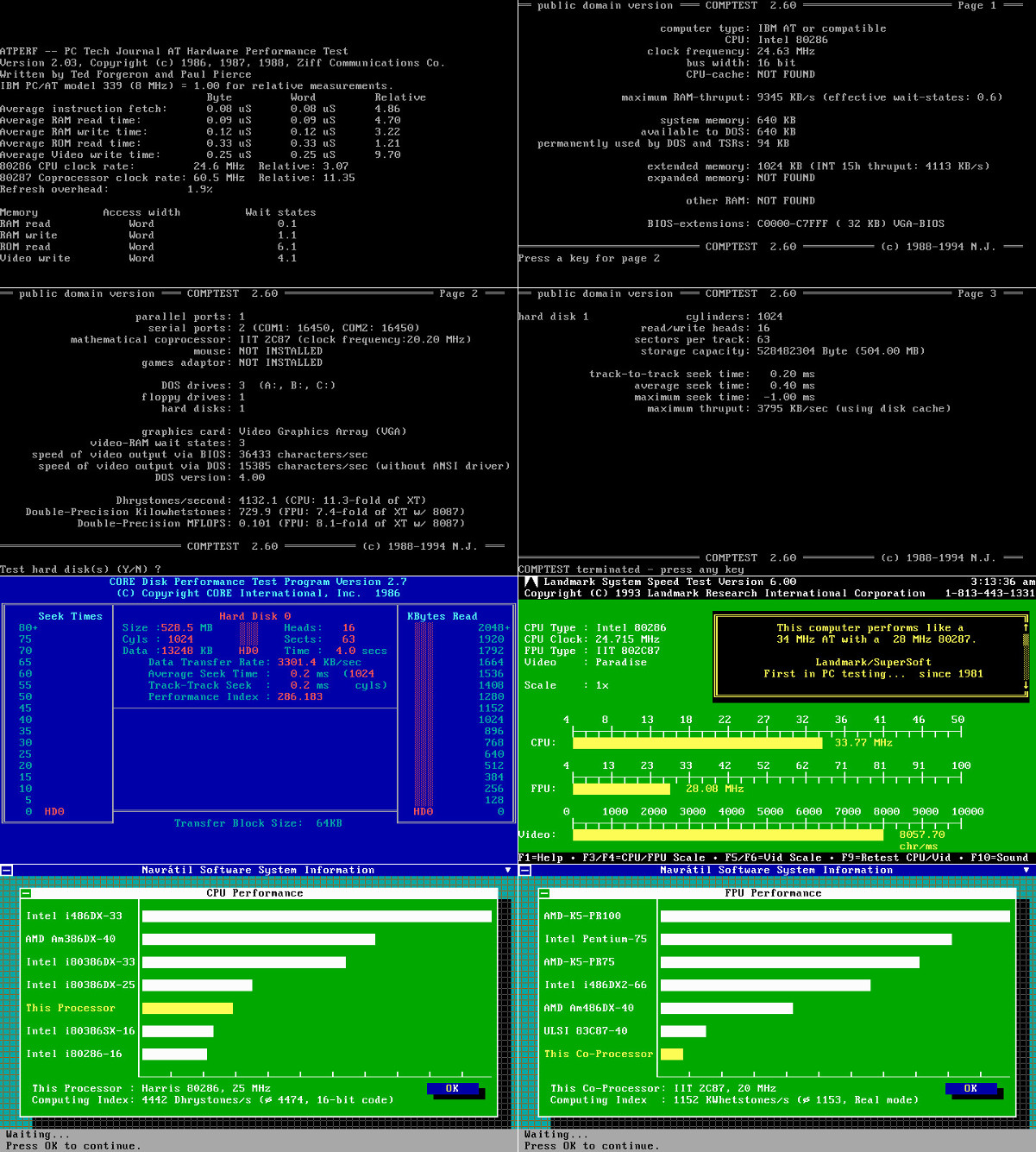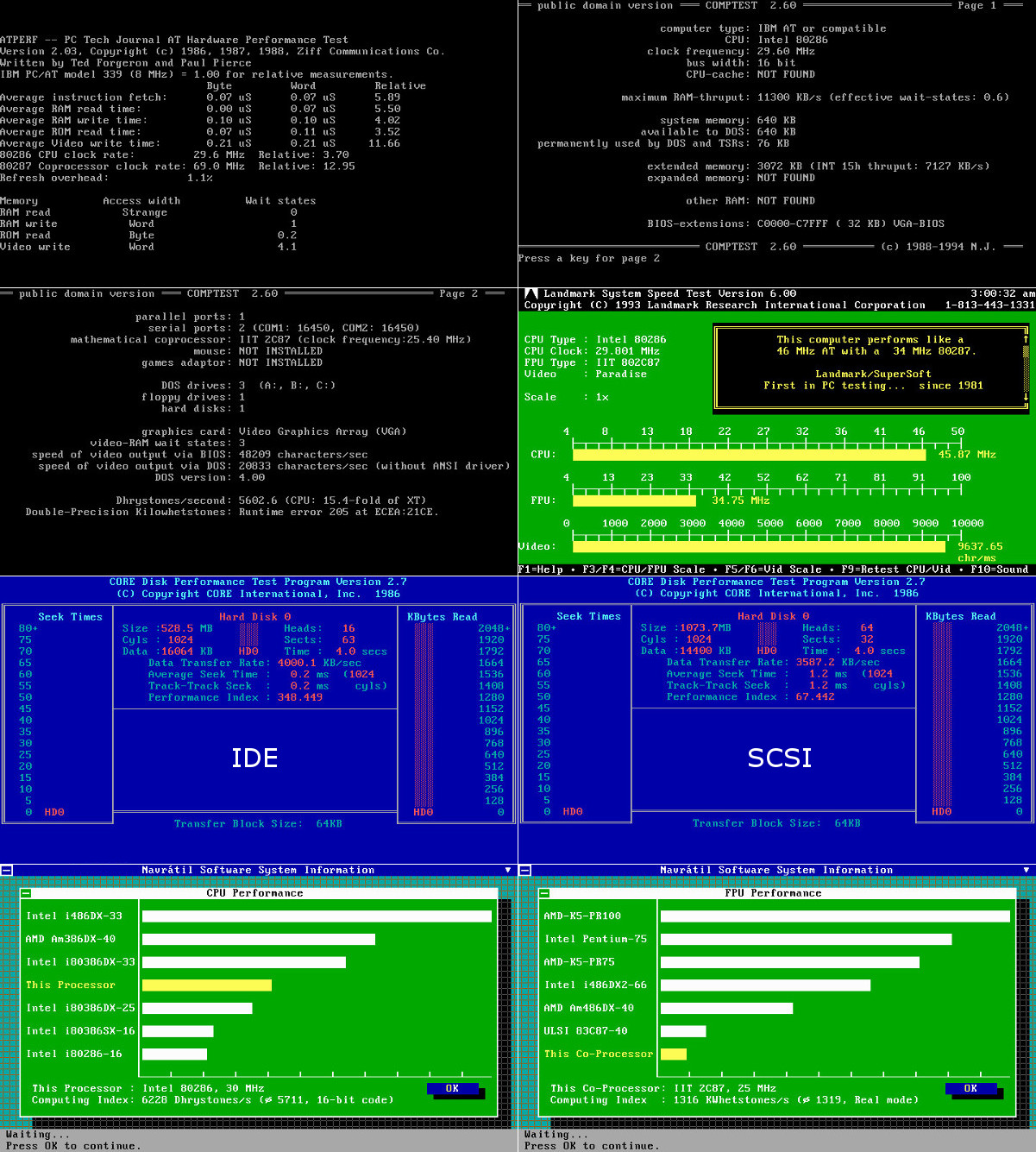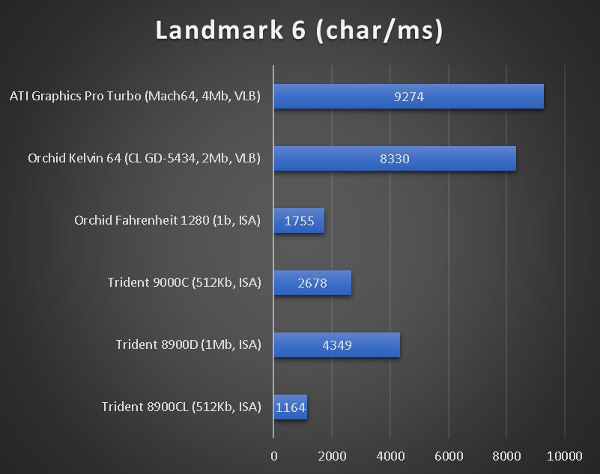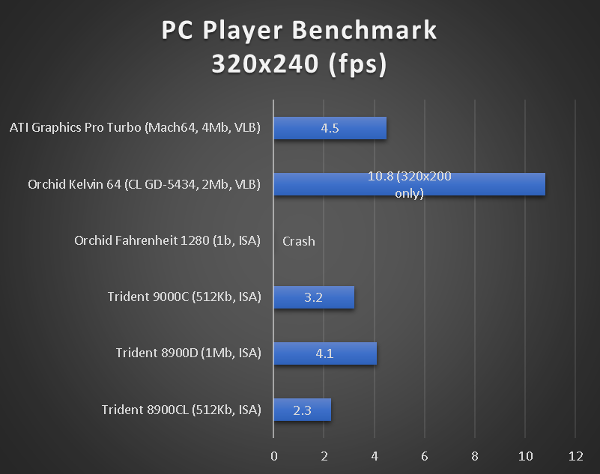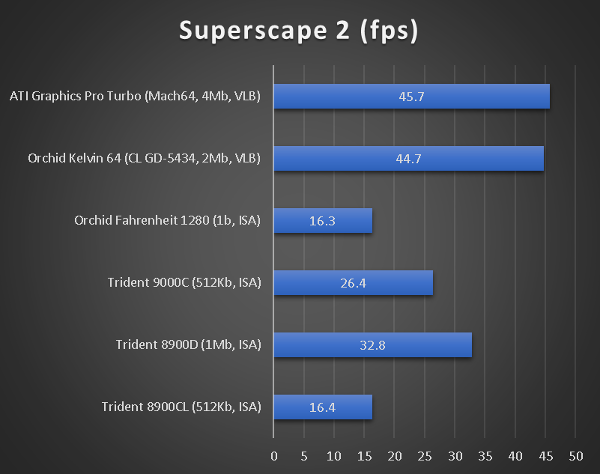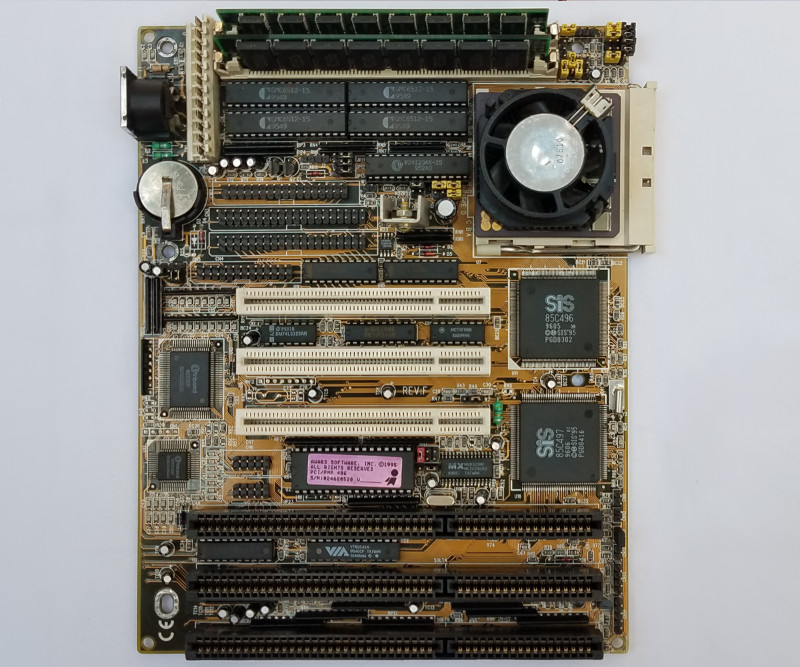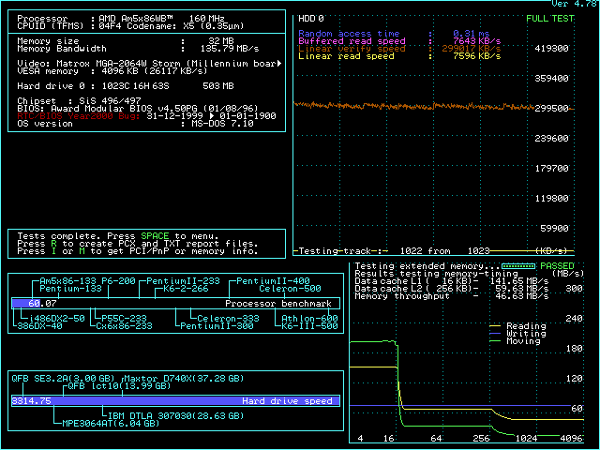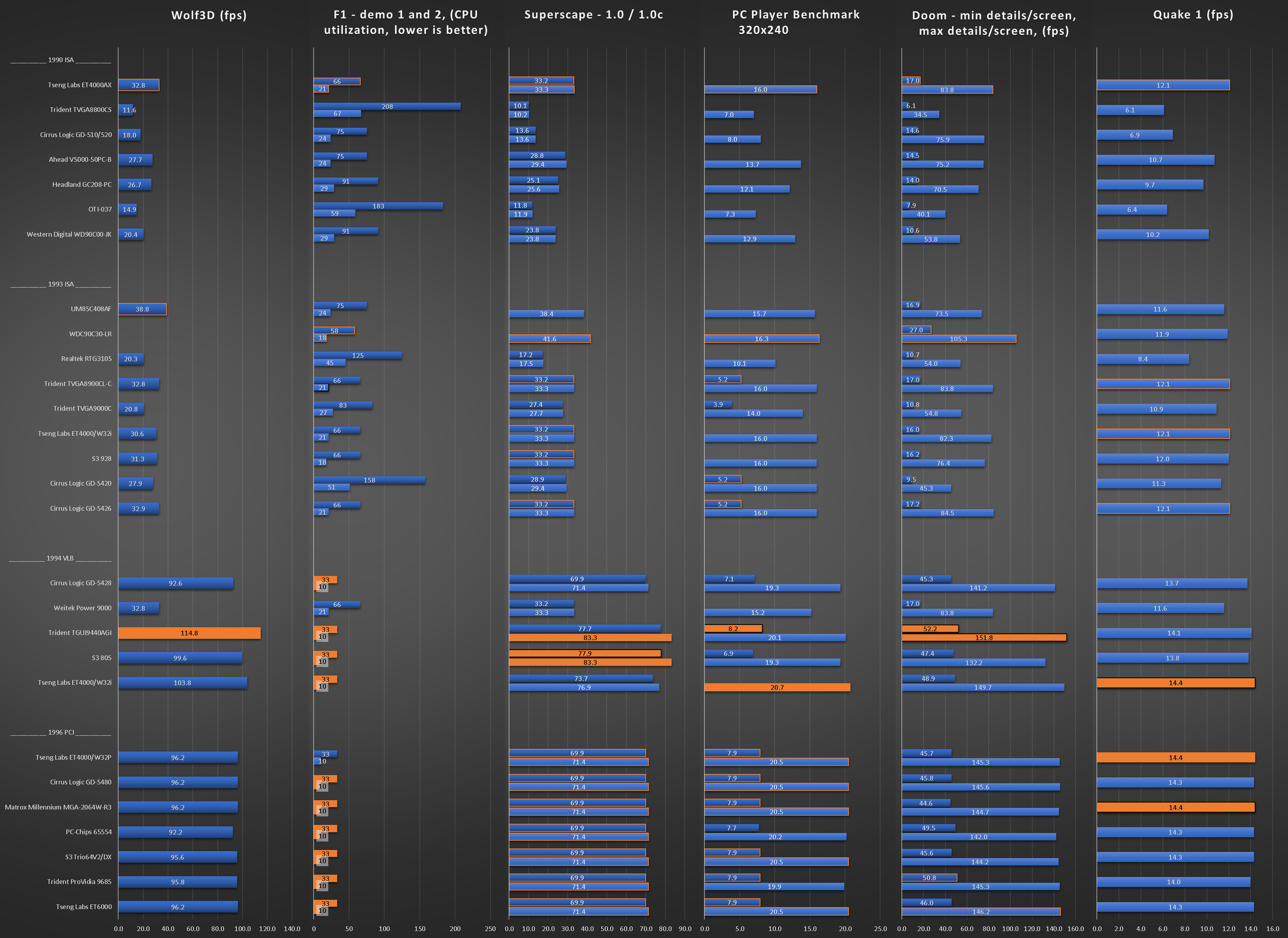ASUS 386/33-64k based on SiS 85C310/320/330 "Rabbit"
The hardcoded 64Kb of DIP22 SRAM, max 8Mb of RAM and barebone BIOS (no timings, etc.) hint at an early stage 386 hardware, offering somewhat subpar performance.
UPDATE: After stumbling upon some random information online, i just realized that this motherboard is a later model of what Asus started their business with back in 1989 - the one they developed "blindly" without having access to an Intel's 386 CPU prototype. Or, at least that's what the legend says.
I was annoyed by the lack of options in the BIOS, so tried bunch of other ones that are rich on cache/ram timings.
Results were not great - performance was same or worse, compared to the default BIOS.
Okay, fine. Lets see if it overclocks then.
I didn't expect much, given the already low entry point, but for my surprise this boy turned out to be unexpectedly capable in that department.
It works completelly reliably in DOS and Windows 3.1 at 50MHz. Well, with one exception - it failed all 3D rendering tests. None of the 3DCC apps can get to UI, let alone render something - a big red-flag in my books.
There was a bit of complication with finding the right video card for the 50MHz FSB. After combing through bunch of them, it was an ET4000AX from 1998 that did the job. The rest were unstable, or didn't light up at all.
I started with 60ns RAM, but noticed that 70ns is fine too.
Ok, what about 55MHz ?
The motherboard takes it with ease (along with the CPU and VGA), but the IDE controller gives up.
Tried bunch of other IDE/SCSI adapters - they all hang during their turn at the end of POST.
Too bad ...
Screen does not light-up at 60MHz.
https://www.petershipkov.com/temp/retro_pc_im … motherboard.jpg
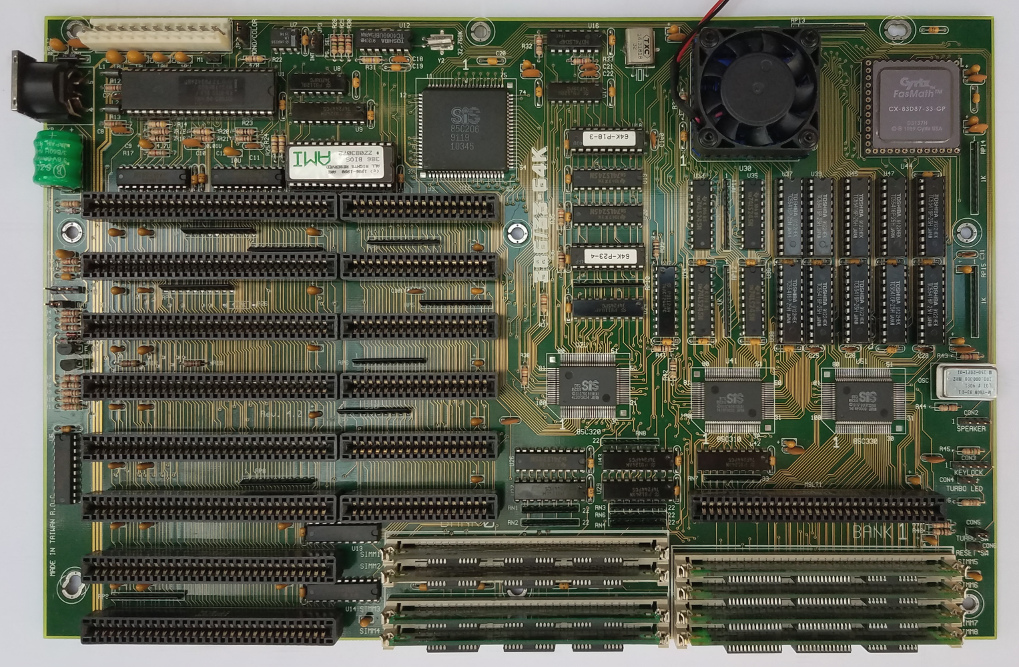
https://www.petershipkov.com/temp/retro_pc_im … _2_et4000ax.jpg
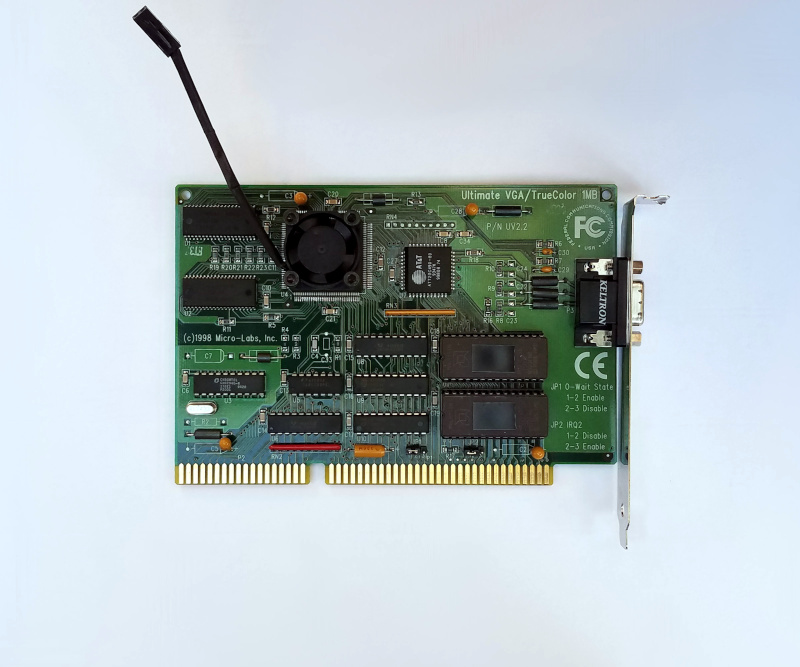
For some reason i was not able to capture screenshots of NSSI.
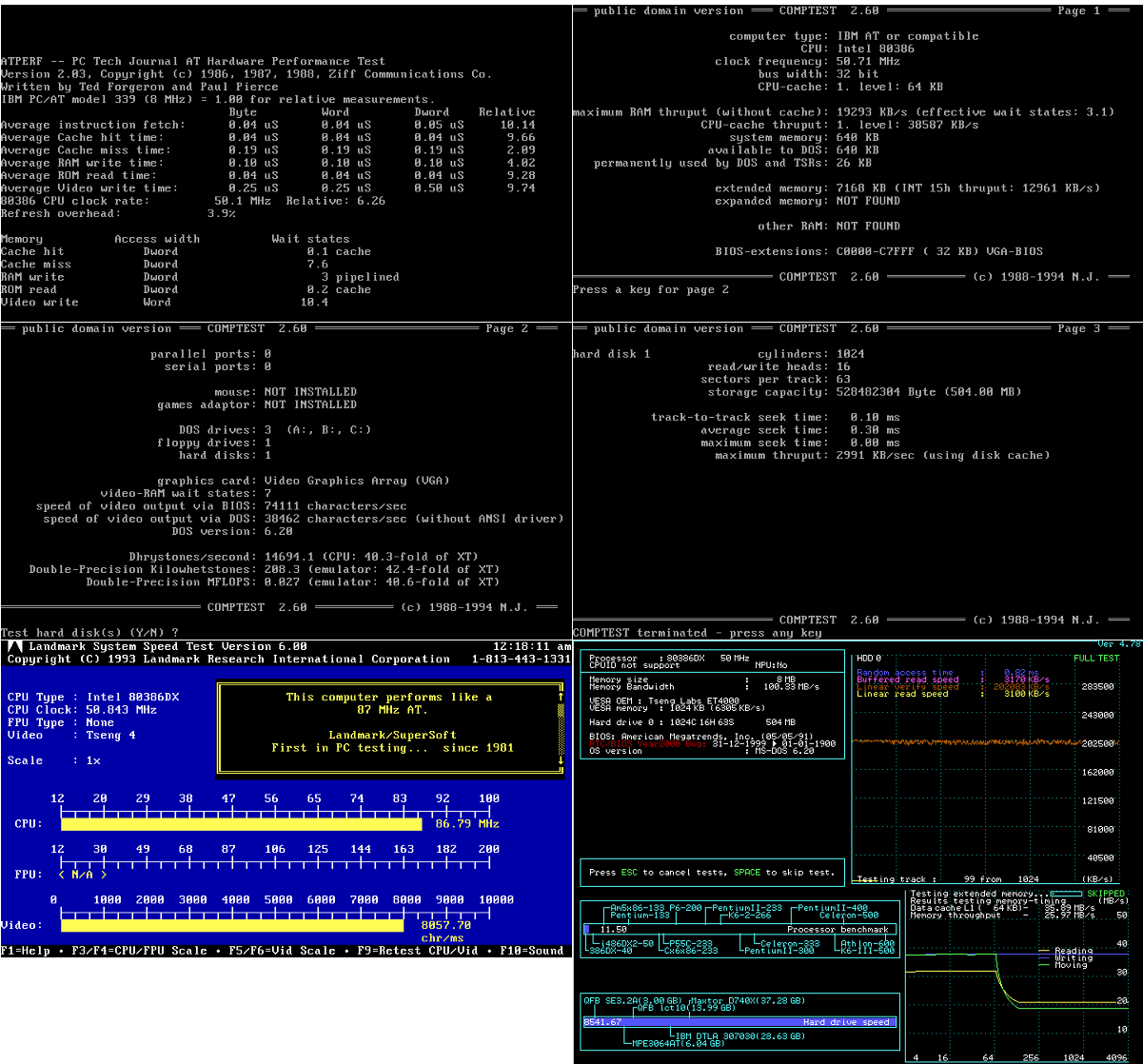
benchmark results
The motherboard running at 50MHz overcomes its inherent slowness and positions itself near the top.
8MB RAM limit won't be a problem for games and casual computing, but is a factor.
Failures with offline graphics tests hint at stability issues.
